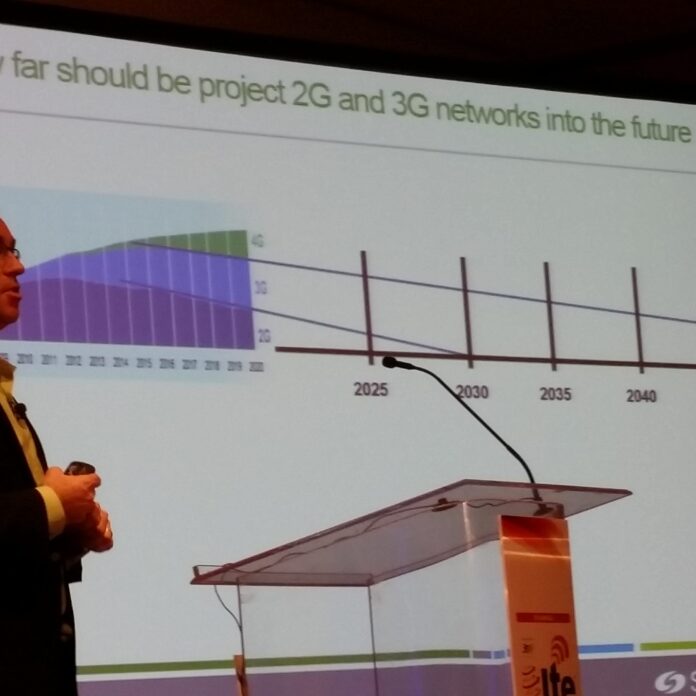DALLAS – Signaling is overhead in networks, and signaling challenges in LTE are ramping up as the networks serve more customers and support services such as voice over LTE, according to discussion on signaling at LTE North America.
Bill Welch, senior product manager for Sonus Networks, cited a number of factors in increased signaling in LTE: the fast adoption of the technology; the adoption of VoLTE; and the fact that while LTE may be quickly growing, legacy networks are still seeing a lot of use.
In his presentation, Welch said he doesn’t expect that the 2G network will sunset until around 2030, and 3G will be around even longer. While 64% of the world’s population will be covered by LTE in 2020, Welch said, only about 28% of the connections will be LTE – meaning that legacy networks, and their SS7 traffic, will continue to be part of the network traffic mix for a very long time to come.
Network functions virtualization and software-defined networking may actually add to LTE signaling, Welch said, at least in terms of orchestration, but recent RCR Wireless webinar polls provided some insight into the level of SDN planners are looking for. While the majority want fully elastic NFV implementations, a significant percentage, Welch said, want the ability to “pull apart” virtual machines even further so that individual elements are virtualized and work together that might scale at different rates.
In a look forward to signaling challenges likely to come with “5G,” Alberto Diez, principal consultant at Mobile Technology and Strategy, cited NFV/SDN as a definite factor – the elasticity that operators want to see needs to be supported and enabled by signaling. Diez also delved into what he called “extreme use cases” such as the ability to create not just a central virtualized evolved packet core, but individual virtual “micro EPCs” for each customer, which is possible but would drive significant signaling in management and orchestration. One thing that could lessen signaling for “Internet of Things” devices, he said, is if mobility is offered as an add-on service – both potentially limiting the signaling of such devices and providing an additional revenue opportunity for carriers.
“Not all devices need mobility, or don’t need complete mobility,” Diez said, noting that signaling overhead may only be needed for IoT devices if they leave their central tracking area for another – which many, particularly sensors, may not.
Mobile edge computing may positively impact signaling to the network core if more work can be done at the edge of the network, he added. The connected car may be another IoT area where mesh networks are used without much signaling to the core due to latency concerns.

